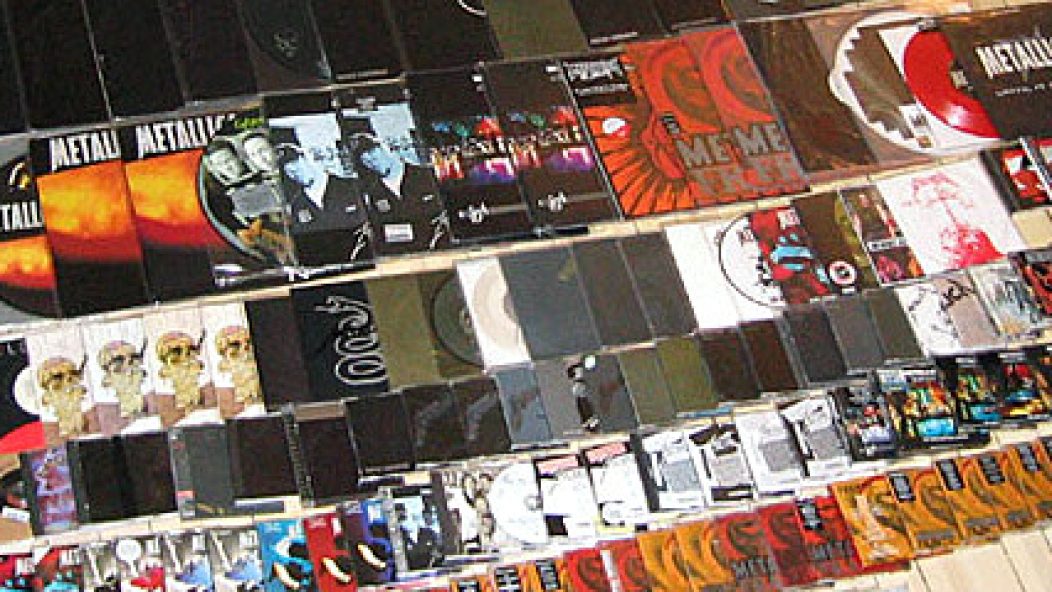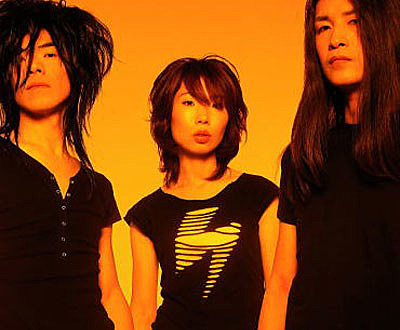
Very long discographies: True or False?

. . .
Why do bands compile long discographies? By long, I don’t mean, say, 10 full-lengths, a typical figure for a long-running band. I mean the ridiculous triple-digit numbers that bands put up these days.
The Encyclopaedia Metallum Discordance has a sorting filter called “Bands by Release Count”. It shows that Deep Purple has the most releases of any “metal” band, with 221. Agathocles is second with 193, while Motörhead is third with 161. Releases include everything discrete that a band puts out: demos, singles, splits, albums.
Major label bands like Metallica and Iron Maiden compile long discographies because several singles typically accompany each album. Add cash cows like compilations and live albums, and it’s unsurprising that big names put up big numbers discography-wise.
But for underground bands, such numbers baffle me. If releases come out in response to demand, where is the demand for 193 Agathocles releases? Are people actually collecting them all? Can they tell the releases apart? Could the band remember enough songs to take requests live? Why do 193 Agathocles releases even exist?
. . .

. . .
Perhaps a more interesting measure than sheer length of discography is the length of discography over time. Longer-running bands naturally have more chances to amass a discography. But which ones are cranking them out like Catholic babies?
Using the Discordance’s list, I divided the number of releases by the number of years that a band has been in existence. I’ll call the result “prolificness”. Below are the 10 most prolific “metal” bands. The first number is the number of releases, the second is the number of years in existence, and the third is their quotient, average releases per year.
1. Zarach ‘Baal’ Tharagh: 125/10 = 12.5
2. Senmuth: 75/6 = 12.4
3. Akromusto: 47/6 = 7.83
4. Njiqahdda: 39/5 = 7.8
5. Agathocles: 193/25 = 7.72
6. Uruk-Hai: 79/11 = 7.18
7. Unholy Grave: 120/17 = 7.06
8. Heirdrain: 53/8 = 6.63
9. Melvins: 108/17 = 6.35
10. Nadja: 49/8 = 6.13
The trends are clear. Two bands are grindcore (Agathocles, Unholy Grave), while the rest are one- and two-person bands that play mostly ambient metal. The one exception is Melvins, whose eternal job is to be the exception.
Several conclusions are easy to draw. First, one- and two-person bands don’t have the checks and balances of normal bands. No one else is there to tell them their stuff sucks. So they release everything. With recording technology so cheap these days, it’s easy to press up 50 CD-R’s of a demo. Second, ambient sounds and lo-fi black metal and grindcore are probably too easy to make. You don’t see death or thrash metal bands racking up huge discographies. (Except for Nunslaughter – can anyone tell their 105 releases apart?) Finally, of these prolific artists, arguably none are “real” metal. Perhaps “real” metal does not lend itself to pumping out product.
. . .

. . .
As an editor of writers (including myself), I understand the inability of artists to self-edit. However, I don’t understand why fans indulge such behavior. When Justin Broadrick flooded the market with Jesu EP’s and splits, people still bought them, even though they were thin on ideas and inspiration. Why do people obsess over demos and splits today? Twenty years ago, demos or splits might have been valid artistic statements. But today there are so many that say so little that I can’t help but see a baseball card-type of collect-them-all mentality at work.
From a market standpoint, this is fine. If artists put out crap, and people still buy it, who am I to care? But from an artistic standpoint, prolificness is terrible. The market is over-saturated, artists lose mystique because they’re never “away”, and bands forsake significant artistic statements in favor of drips and drabs.
Playing devil’s advocate to what I’ve said, however, I can see reasons for drips and drabs. Artistically, the EP is a good format for bands to explore ideas that might not be appropriate for a full-length. Financially, drips and drabs might be better ways to sell albums nowadays. If you have 10 songs that you want to sell for $10, people are more likely to buy them if they come in two packets of 5 songs for $5. Even though the total price is the same, psychologically $5 is less menacing than $10. And if you break up the 10 songs into three 7″s, call them Parts 1, 2, and 3, and give each 7″ a different vinyl color – people will climb over each other to collect them all.
One’s views on this might depend on one’s age. I grew up with albums, so those will always be the measures of bands to me. My favorite bands don’t have very long discographies because they collect their songs onto albums. Kids today pull music from everywhere – an iTunes single here, a blogspot download there. Their hard drives are wild assortments of folders, bitrates, and ID3 tags. This is distasteful to me, but maybe it doesn’t matter. Is the music good or not? That’s probably the only question I should be asking.










